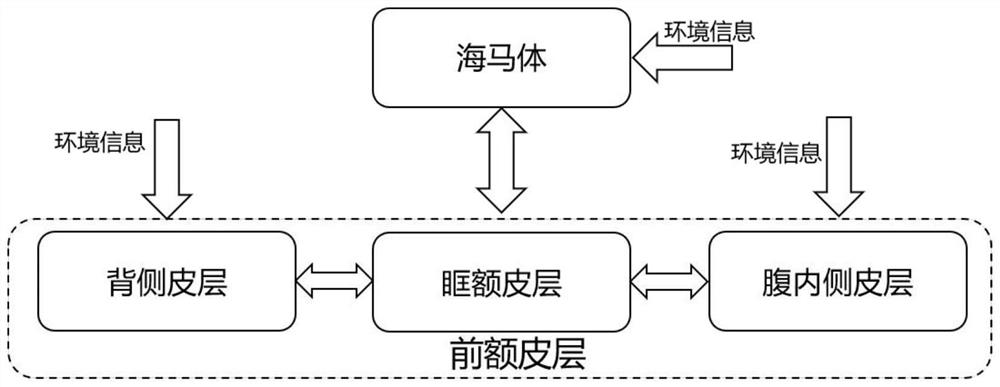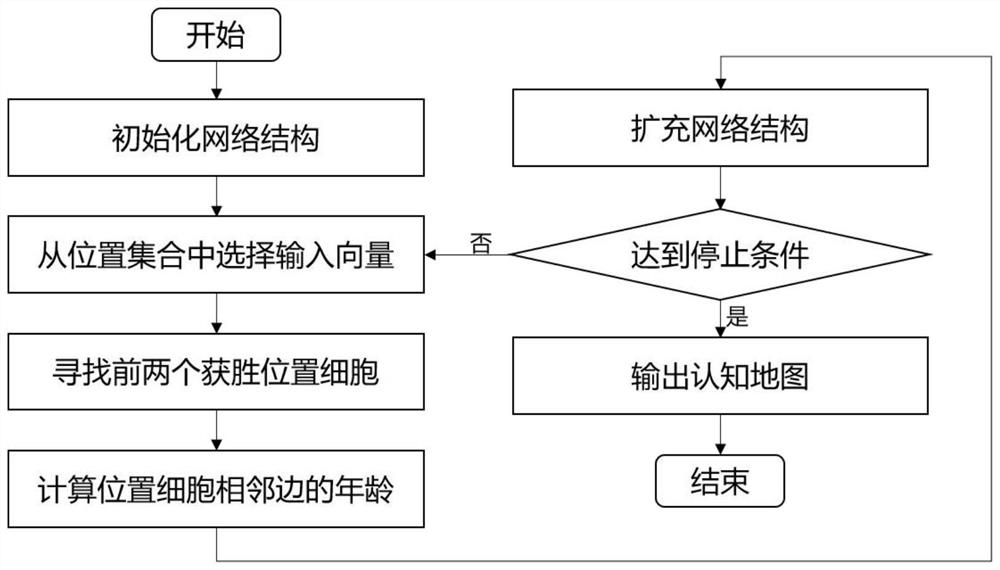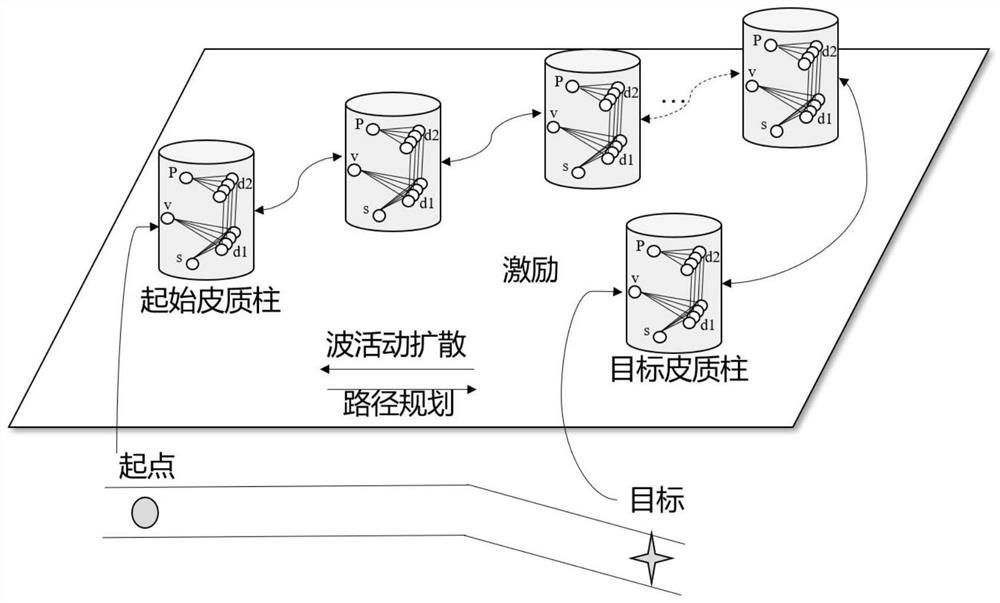Improved hippocampus-forehead cortex network space cognition method
A technology of cyberspace and hippocampus, applied in the field of mobile robot spatial cognitive navigation model, which can solve the problems of poor performance, weak model adaptability and robustness, etc.
- Summary
- Abstract
- Description
- Claims
- Application Information
AI Technical Summary
Problems solved by technology
Method used
Image
Examples
Embodiment Construction
[0059] figure 1 For the structure diagram of the model system, see figure 1 Inspired by the research of brain science and spatial cognition, the present invention provides an improved hippocampus-prefrontal cortex network spatial cognition model. The model mainly involves two brain regions, the hippocampus and the prefrontal cortex. The hippocampus receives environmental information to generate a cognitive map. The prefrontal cortex, as a supplement to the hippocampal position coding, is suitable for target representation and reward-dependent navigation planning. It is divided into dorsal cortex , ventromedial cortex, orbitofrontal cortex three sub-regions. The dorsal cortex, the ventromedial cortex, is involved in detecting changes in the environment and relaying information to the hippocampal circuit and other areas of the prefrontal cortex to support path-based planning, and the hippocampus processes this information and passes it on to the orbitofrontal cortex to set subg...
PUM
 Login to View More
Login to View More Abstract
Description
Claims
Application Information
 Login to View More
Login to View More - R&D
- Intellectual Property
- Life Sciences
- Materials
- Tech Scout
- Unparalleled Data Quality
- Higher Quality Content
- 60% Fewer Hallucinations
Browse by: Latest US Patents, China's latest patents, Technical Efficacy Thesaurus, Application Domain, Technology Topic, Popular Technical Reports.
© 2025 PatSnap. All rights reserved.Legal|Privacy policy|Modern Slavery Act Transparency Statement|Sitemap|About US| Contact US: help@patsnap.com



